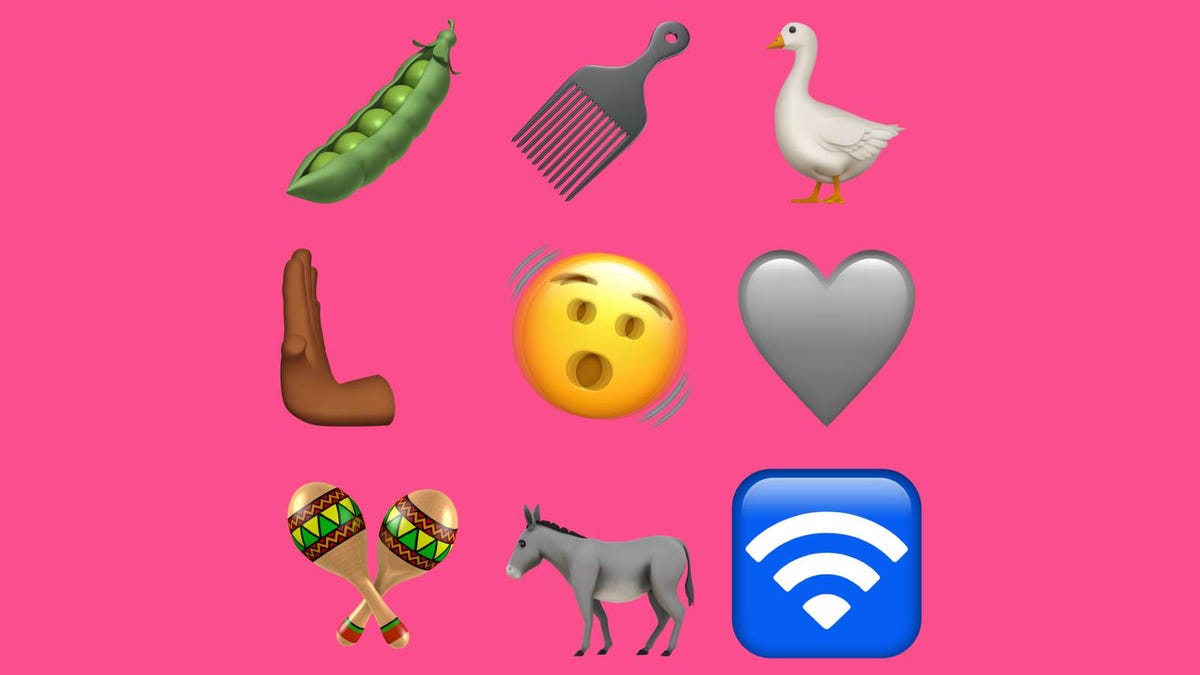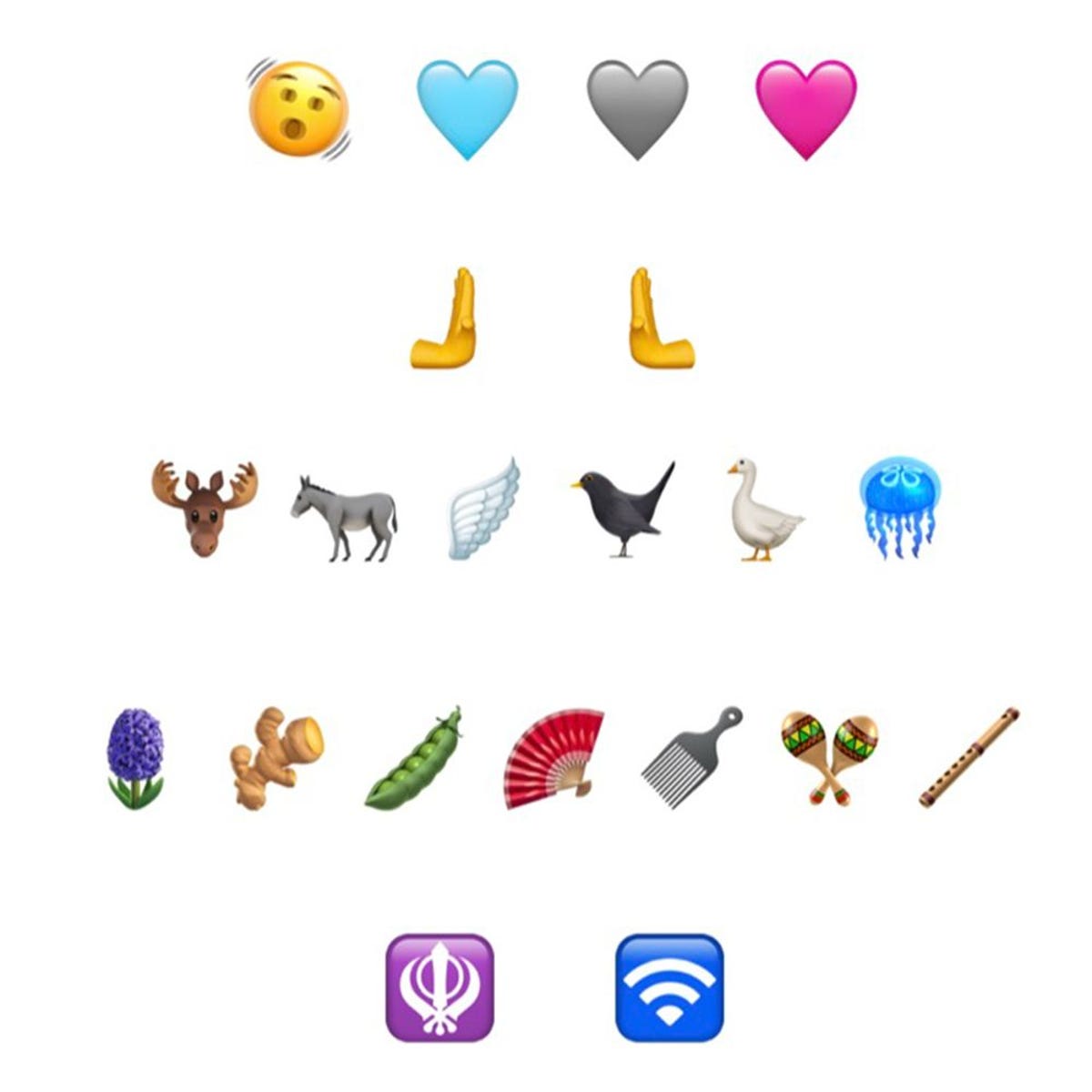Technologies
Every New Emoji Coming to Your iPhone With iOS 16.4
These emoji and the latest update could land any day now.

Your iPhone already has thousands of emoji, but you’ll soon get even more. The first iOS 16.4 beta included 31 new iPhone emoji that beta testers could use, and as soon as iOS 16.4 releases to the public, others will be able to use, too.
The new emoji include a shaking-head smiley, animals like a donkey, moose and a goose, and additional heart colors, including plain pink and light blue. The plain pink heart has been a long-sought emoji, according to Emojipedia, which named it one of the site’s top emoji requests in 2015. Last year’s significant emoji drop in iOS 15.4 included a melting face, a biting lip and a pregnant man, with 37 new designs in total.


A moose, donkey and goose are some of the new emoji iPhone users might see soon.
EmojipediaEmojipedia said the new emoji came from Unicode’s September 2022 recommendation list, Emoji 15.0.
There isn’t any word yet on when the new emoji will be available across iOS devices, and the designs of the new emoji might change between now and their final release on iOS.
Apple issued a handful of bug fixes and patches with the release of iOS 16.3.1 on Feb. 13, a few weeks after the release of new features in iOS 16.3 in January.
For more, check out how to decipher each emoji and take a look at the emoji you may have missed with the release of iOS 15.4.
Here’s the complete list of new emoji in iOS 16.4 beta
- Shaking Face
- Pink Heart
- Light Blue Heart
- Grey Heart
- Donkey
- Moose
- Goose
- Wing
- Jellyfish
- Hyacinth
- Pea Pod
- Ginger
- Folding Hand Fan
- Hair Pick
- Flute
- Maracas
- Khanda
- Wireless
- Rightward Pushing Hand
- Leftward Pushing Hand
- Black Bird
- Rightward Pushing Hand: Light Skin Tone
- Rightward Pushing Hand: Medium-Light Skin Tone
- Rightward Pushing Hand: Medium Skin Tone
- Rightward Pushing Hand: Medium-Dark Skin Tone
- Rightward Pushing Hand: Dark Skin Tone
- Leftward Pushing Hand: Light Skin Tone
- Leftward Pushing Hand: Medium-Light Skin Tone
- Leftward Pushing Hand: Medium Skin Tone
- Leftward Pushing Hand: Medium-Dark Skin Tone
- Leftward Pushing Hand: Dark Skin Tone
Technologies
The Most Exciting Video Game Rumors and Leaks Ahead of 2026
Technologies
Today’s NYT Mini Crossword Answers for Wednesday, Dec. 17
Here are the answers for The New York Times Mini Crossword for Dec. 17.

Looking for the most recent Mini Crossword answer? Click here for today’s Mini Crossword hints, as well as our daily answers and hints for The New York Times Wordle, Strands, Connections and Connections: Sports Edition puzzles.
Need some help with today’s Mini Crossword? Read on. And if you could use some hints and guidance for daily solving, check out our Mini Crossword tips.
If you’re looking for today’s Wordle, Connections, Connections: Sports Edition and Strands answers, you can visit CNET’s NYT puzzle hints page.
Read more: Tips and Tricks for Solving The New York Times Mini Crossword
Let’s get to those Mini Crossword clues and answers.
Mini across clues and answers
1A clue: Nod (off)
Answer: DOZE
5A clue: Naval submarine in W.W. II
Answer: UBOAT
7A clue: Tricky thing to do on a busy highway
Answer: MERGE
8A clue: Heat-resistant glassware for cooking
Answer: PYREX
9A clue: Put into groups
Answer: SORT
Mini down clues and answers
1D clue: Break up with
Answer: DUMP
2D clue: Falls in line, so to speak
Answer: OBEYS
3D clue: Legendary vigilante who cuts a «Z» with his sword
Answer: ZORRO
4D clue: Rarin’ to go
Answer: EAGER
6D clue: Common reminder for an upcoming appointment
Answer: TEXT
Don’t miss any of our unbiased tech content and lab-based reviews. Add CNET as a preferred Google source.
Technologies
You Can Watch an Exclusive Avatar: Fire and Ash Scene on TikTok Right Now
Disney and TikTok partner on an immersive content hub for James Cameron’s latest movie about the alien Na’vi.
If you’re not quite ready to head to the theater to watch Avatar: Fire and Ash, an exclusive scene preview might sell you on the visual spectacle. As part of a new collaboration with the social media giant, Disney is posting snippets of its new movie to its TikTok account.
This scene isn’t part of any trailer and won’t be posted to other social media accounts, making TikTok the only place you can view it — unless you buy a movie ticket. A first look at the new movie’s scenes isn’t the only Avatar-related bonus on the social media platform right now, either. TikTok has partnered with the house of mouse to bring an entire «immersive content hub» to the app.
A special section of TikTok includes quizzes and educational videos that explore the alien world of Pandora shown off in the movies. On TikTok, you can take a personality quiz to find out what Na’vi clan you most closely align with and unlock a special profile picture border to use on your account.
Science and fiction blend together with a series of videos from real doctors who explain the basis for some of Avatar’s world-building. If you want to learn about exoplanets or how realistic the anatomy of the movie’s alien animals is, these videos will feed your brain while still providing entertainment value.
Perhaps the most enticing part of Disney’s latest social media collaboration is the opportunity for fans to win prizes and trips. TikTok creators who make edits with the #TikTokAvatarContest hashtag are entered into a competition to win Avatar merchandise. The biggest winners will be able to take a trip to visual effects studio Wētā Workshop in New Zealand or visit Avatar director James Cameron’s Lightstorm Entertainment Studio in Los Angeles.
Avatar: Fire and Ash is the third installment in director Cameron’s cinematic passion project. While the first Avatar movie was released in 2009, Cameron didn’t release another entry in the franchise until 2022. In total, there is a five-movie arc planned for the indigo alien Na’vi on the moon of Pandora.
The Avatar movies are known for pushing the boundaries of CGI visual effects in cinema. They are also historically big winners at the box office: the original Avatar is the highest-grossing film of all time, earning $2.9 billion across its theatrical releases. Its sequel, Avatar: The Way of Water, is the third-highest-grossing film of all time, trailing Avengers: Endgame. You can stream those movies on Disney Plus.
It remains to be seen whether Avatar: Fire and Ash will financially live up to its predecessors. The film currently has mixed reviews from critics on Rotten Tomatoes.
-

 Technologies3 года ago
Technologies3 года agoTech Companies Need to Be Held Accountable for Security, Experts Say
-

 Technologies3 года ago
Technologies3 года agoBest Handheld Game Console in 2023
-

 Technologies3 года ago
Technologies3 года agoTighten Up Your VR Game With the Best Head Straps for Quest 2
-

 Technologies4 года ago
Technologies4 года agoBlack Friday 2021: The best deals on TVs, headphones, kitchenware, and more
-

 Technologies4 года ago
Technologies4 года agoVerum, Wickr and Threema: next generation secured messengers
-

 Technologies4 года ago
Technologies4 года agoGoogle to require vaccinations as Silicon Valley rethinks return-to-office policies
-

 Technologies4 года ago
Technologies4 года agoOlivia Harlan Dekker for Verum Messenger
-

 Technologies4 года ago
Technologies4 года agoiPhone 13 event: How to watch Apple’s big announcement tomorrow
